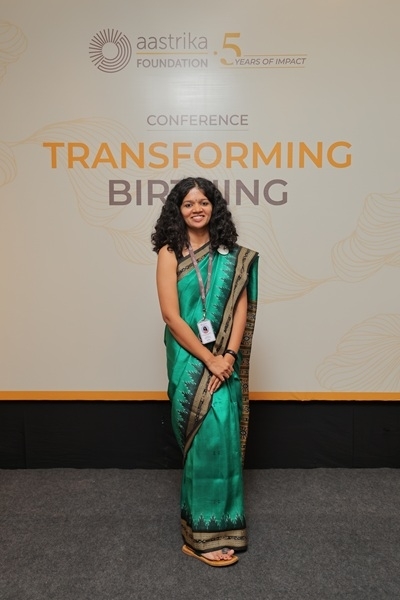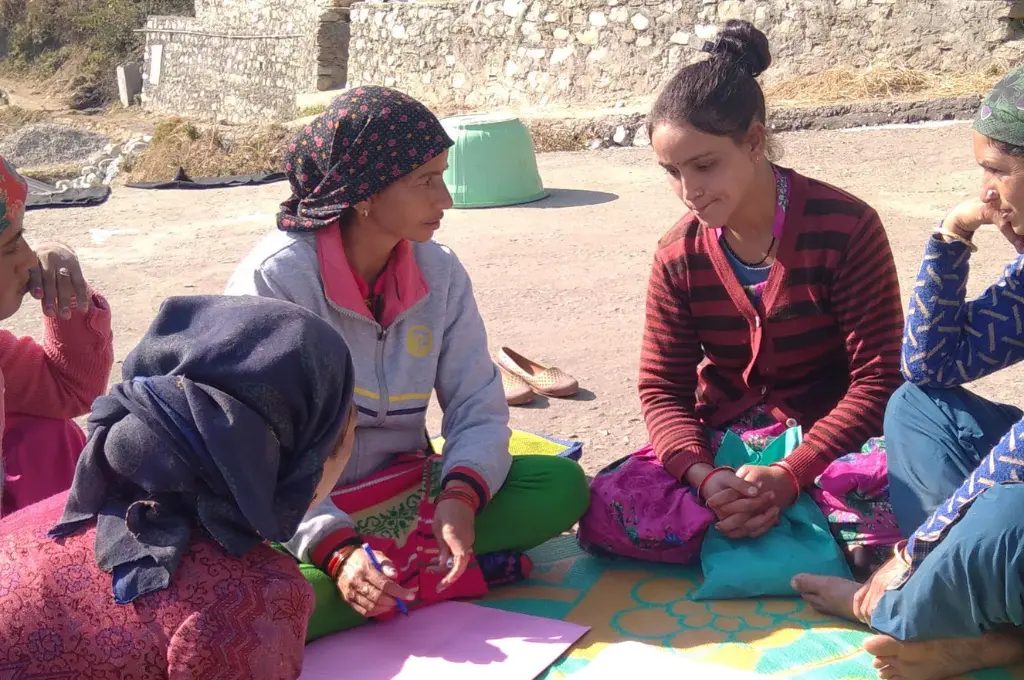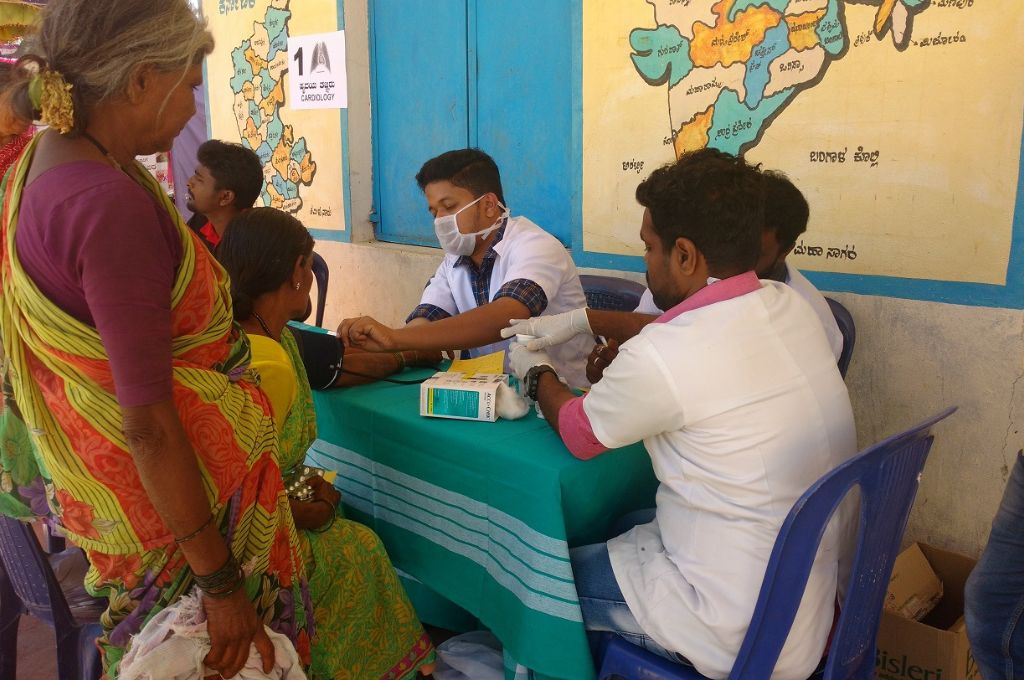India’s maternal health landscape has been grappling with challenges rooted in both the country’s general healthcare system and its sociocultural realities. The former comprises systemic problems in institutional healthcare, such as lack of infrastructure and/or equipment, inadequate staff, and poorly trained healthcare workers.
The latter, however, refers to women’s lack of agency in decision-making and autonomy over their bodies, which is often linked to socio-economic status, lack of education, cultural beliefs, patriarchal mindsets, and the like. This weakens their bargaining power, particularly during the vulnerable moments of pregnancy, labour, and childbirth. As a result, decisions related to pregnancy and childbirth are made for women, not by them. Often, these decisions do not take into account what is best for the woman herself, but are based on factors such as the profits of the healthcare facility and the convenience of those making decisions for her.
Together, these factors are responsible for the lack of a women-centred approach to maternal healthcare in India—one where the well-being of the woman is at the centre of all decision-making.
Challenges in the maternal health landscape
The absence of a women-centred approach has allowed certain processes and practices to crop up in maternal healthcare, which could potentially have grave consequences for women and newborns. Some of these problems are listed here:
1. Inadequate care (“too little, too late”)
Inadequate or delayed healthcare can result in maternal mortality, that is, the death of a woman during pregnancy, childbirth, or within 42 days of the termination of pregnancy. By 2018–20, India’s maternal mortality ratio (MMR)—maternal deaths per 1 lakh live births—had declined to 97, a marked improvement from 130 in 2014–16. However, several states, such as Assam, Madhya Pradesh, Uttar Pradesh, and Chhattisgarh, continue to report an MMR of 130 or higher. According to a WHO and UNICEF report, India recorded 24,000 maternal deaths in 2020, accounting for 8.3 percent of global maternal deaths that year.
2. Excessive intervention (“too much, too soon”)
This refers to the over-medicalisation of pregnancy and childbirth, and is reflected in high rates of interventions such as induction, augmentation, episiotomy, and Caesarean section (C-section). According to the WHO, the ideal rate for C-sections is 10–15 percent. However, as per the National Family Health Survey (NFHS)-5, the C-section rate in India was 21.5 percent overall and 47.4 percent in the private sector. This means that C-sections accounted for approximately half of all births in private health facilities. This figure nearly doubles in states and UTs such as Telangana, West Bengal, and Jammu and Kashmir, where C-section rates in the private sector exceed 80 percent. There are several factors responsible for rising C-section rates, including hospitals prioritising profit maximisation, lack of training in the latest evidence-based protocols, and pressure from clients and their families. Unnecessary C-sections increase the risk of morbidity for both mother and baby.
3. Disrespect and abuse
Women often experience disrespect and abuse during pregnancy, labour, and childbirth. This takes various forms, such as verbal, physical, emotional abuse; non-consented care; lack of informed consent; and denial of a birth companion during labour. Non-consented care includes practices such as conducting a vaginal exam without the mother’s permission, whereas a lack of informed consent involves having the mother sign a form for an intervention without fully explaining its consequences to her or without addressing all her questions and concerns. Research suggests that the prevalence of disrespectful maternity care in India is as high as 71 percent. The most commonly reported forms of ill-treatment were non-consent and verbal abuse, followed by threats, physical abuse, and discrimination. The anxiety and physical pain that women naturally experience during labour and delivery can be compounded by these factors, making childbirth a traumatic experience.

Midwifery: a maternal healthcare solution
Midwifery can help address several of the aforementioned challenges. Professional midwives are specialists trained to provide a women-centric model of care. They specialise in physiologic, or normal, birth, and provide support to women during pregnancy, labour, birth, and the post-partum period. Midwives are also trained to identify risk conditions and refer patients to appropriate healthcare professionals when necessary, making medical interventions the exception and not the norm. By supporting physiologic births and conducting interventions only when medically indicated, midwives reduce the economic burden of medicalised care on women and their families. They also solve for the infrastructure and staff shortage in healthcare facilities, particularly public-sector ones.
In 2018, the central government introduced a programme to build a cadre of professional midwives to improve the quality of maternal healthcare and reduce MMR. The programme would train midwives to provide respectful, compassionate, and evidence-based care to low-risk pregnant women. The 18-month programme follows a cascade training model: International Midwifery Educators train Nurse Practitioner in Midwifery Educators (NPMEs) at National Midwifery Training Institutes (NMTIs). The NPMEs in turn establish State Midwifery Training Institutes (SMTIs), where they train Nurse Practitioners in Midwifery (NPM), or professional midwives.
The Nurse Practitioners in Midwifery are expected to establish and practise at Midwifery-Led Care Units (MLCUs) at high-caseload government health facilities. The educator course consists of six months of training at national institutes, followed by 12 months of mentorship at state institutes. The professional midwife course comprises 12 months of training at the state institutes, followed by six months of mentorship at the MLCU. Government guidelines recommend that a minimum of four midwives be posted at a high-caseload community health centre and 16–18 at a medical college.
Incidentally, traditional birth attendants (TBAs) are incorrectly referred to as midwives, as are the nursing cadres of General Nurse Midwife (GNM) and Auxiliary Nurse Midwife (ANM) programmes. Unlike these practitioners, educators and midwives under the NPM programme undergo an additional 18 months of specialised midwifery training following their nursing degrees. GNMs and professional midwives also differ in terms of their place of practice. GNMs work across healthcare verticals, while NPMs specialise in low-risk pregnancies and births and practise at MLCUs.
Addressing potential challenges to the programme’s implementation
The NPM programme has tremendous potential to improve maternal healthcare, but the following gaps must be addressed to ensure its effective implementation:
1. Positioning and incentives
The introduction of a new healthcare cadre requires clear guidelines on its place within the health system. Professional midwives need to know where they stand in the existing hierarchy of healthcare practitioners. This enables the candidates applying for this programme to map out their career progression and decide the course of their professional journey. Additionally, those who complete the course should be provided with financial incentives.
2. Awareness and advocacy
Ensuring that various stakeholders, such as healthcare leaders, doctors, students, and nurses, are aware of the NPM programme will facilitate its effective implementation—this would mean that each healthcare provider is aware of their roles and responsibilities and knows when to reach out to each other. It is also important for all high-caseload government facilities to know about the programme and its benefits so that they can nominate candidates for training. Awareness campaigns must extend to healthcare professionals within facilities, making it possible for them to chart out new ways of working together. For instance, by supporting low-risk pregnancies and births, professional midwives can take some of the burden off obstetrician-gynaecologists (OB-GYNs) at a staff-strapped facility. This will free up the latter’s time and energy for high-risk cases.
Finally, and most importantly, expecting mothers and families must be made aware of midwifery services and be encouraged to avail of them. Nonprofits and civil society organisations working with communities, healthcare facilities, and policymakers can play a crucial role in bridging the awareness gap. They can advocate for midwifery—particularly the NPM programme, which may not be widely known by stakeholders working outside the field.
3. Smooth transition through the cascade model
As the NPM programme employs a cascade training model, it is essential that each step in the cascade is in place before the preceding step concludes. For instance, by the time NPM educators complete their six-month teacher training, the stage should be set for them to begin their year of mentorship. State institutes should have been established, and the batch of professional midwives they are to train should be ready to begin their course. Similarly, before the midwives complete their 12-month course at these institutes, the MLCUs, where they are to receive mentorship and eventually practise, should be ready for them to begin work. Gaps between these stages can lead to skill erosion.
Ideally, all the steps in the cascade model should be executed simultaneously. For instance, when the training of the educators begins, the process of filling up seats at the state institutes should also be initiated immediately, as applications, review, written tests, and interviews take time to play out.
4. Opening up the programme to the private sector
Although the NPM programme is currently being implemented in high-caseload government facilities, the introduction of professional midwifery in private healthcare settings will help serve more women. Hardly any private educational institutions in India offer a midwifery programme. Opening up the programme to candidates from non-government facilities will also allow for the training of more midwives and spread midwifery across various healthcare facility types.
A midwifery model of care during pregnancy, labour, and childbirth can ensure that women are treated with respect and dignity, and that they have better birth experiences.
—





